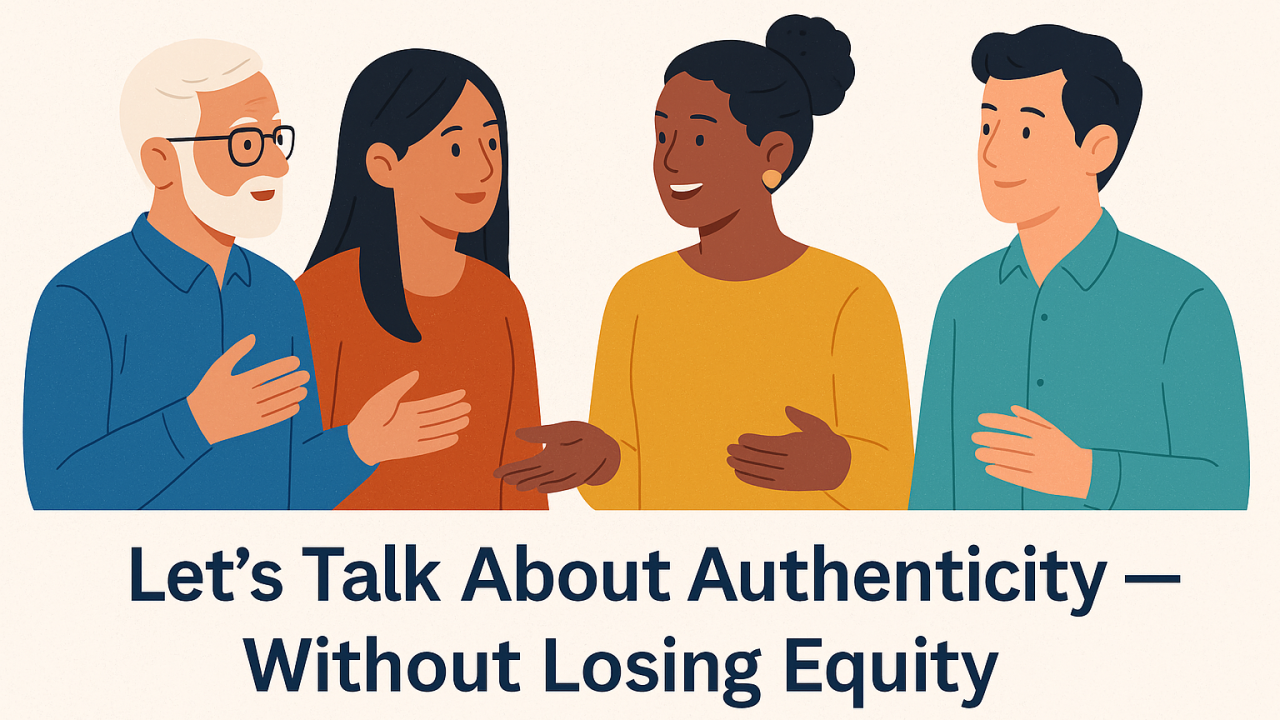Earle Wilkes responds to claims by Tomas Chamorro‑Premuzic's book "Don’t Be Yourself: Why Authenticity Is Overrated"

I listened with interest to Tomas Chamorro‑Premuzic’s recent RNZ interview about his book Don’t Be Yourself: Why Authenticity Is Overrated. It was highly entertaining – his charisma and articulation stood out, but I also found myself disappointed and frustrated by how the relationship between Equity, Diversity & Inclusion (EDI) and authenticity was misrepresentedly framed. Having worked internationally for over 25 years in the EDI space, I felt compelled to respond.
Chamorro-Premuzic’s critique of authenticity as self-indulgence raises valid questions, yet it overlooks the purpose of authenticity within EDI practice, especially in Aotearoa New Zealand. In EDI practice, authenticity isn’t a license for unchecked self-expression. It’s about creating spaces where individuals don’t have to hide their identity, culture, or neurotype to belong. It isn’t “be yourself at all costs”; it’s about equity/fair, safe, inclusive systems.
Research on psychological safety shows teams perform better when people can speak without fear. This aligns with Te Ao Māori concepts of manaakitanga and whanaungatanga – respect, care and collective wellbeing. Authenticity, when grounded in these values, becomes relational rather than transactional. It asks: How can I bring my best self while honouring the dignity and space of others?
EDI is about embedding belonging, not inflating ego. When belonging is woven through our organisations, authenticity becomes a shared norm that strengthens people, performance and organisations.
Here are five responses from an EDI practitioner’s lens:
1. EDI isn’t about self-indulgence/unrestrained self-expression – it’s about systemic equity (fairness)
Authenticity within EDI work is not a license for unrestrained self-expression without accountability; it’s about creating environments where everyone can participate equitably without masking their identity for fear of bias or exclusion. Conflating authenticity with narcissism misrepresents EDI’s purpose, which is structural inclusion, not personal indulgence.
2. Psychological safety and authenticity are linked to performance
Empirical research (e.g. Amy Edmondson, Harvard) shows that psychologically safe, inclusive teams – where people can express themselves respectfully – outperform those that suppress difference. Authenticity, in this context, drives engagement and innovation rather than egoism.
3. Authenticity in EDI is relational, not absolute
EDI good practice recognises that authenticity must be context sensitive. It’s about mutual respect and Intercultural intelligence – knowing when and how to bring one’s authentic self (best self) forward while maintaining professional empathy and awareness.
4. Adaptability and authenticity are complementary
Chamorro-Premuzic positions adaptability against authenticity, but inclusive leadership demonstrates that both coexist. True inclusion empowers individuals to adapt without having to masque.
5. EDI reframes “authenticity” as belonging
EDI doesn’t promote unchecked self-expression; it promotes belonging. When systems are equitable, authenticity is no longer a privilege – it’s a shared norm that allows and validates the less powerful, non-traditional and under-represented.
Summary:
Chamorro-Premuzic’s view of EDI and authenticity misunderstands EDI’s core purpose. EDI doesn’t elevate individual rights by disregarding the collective; it disrupts systems, processes and norms that unfairly entrench advantage and privilege.
Inclusion is the responsibility of those with power. EDI gives leaders the framework and tools to grow environments where difference is welcomed, valued and genuinely leveraged. In essence, EDI doesn’t ask: “How can I be me?” It asks: How can I enable those around me to grow, contribute, and excel?
It has become too easy to blame EDI for society’s long-standing issues or workplace challenges. Those who truly champion merit, equity and opportunity must be mindful of how they talk about EDI to their audiences.
I’d love to hear your thoughts – how do you interpret the link between authenticity and inclusion in your work or organisation?
Earle Wilkes, Director, Equity Matters Limited